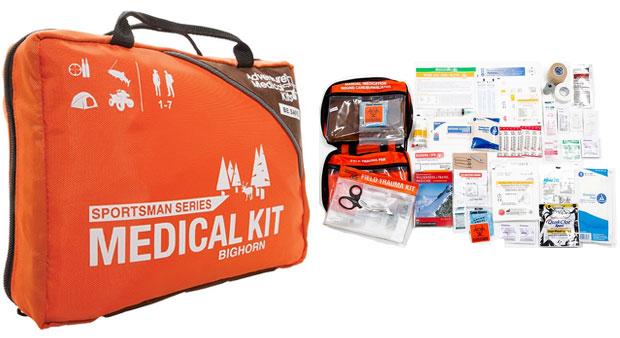
Travel liberates us. It teaches us while enriching with experiences no statutory life can. While living it, It brings various situations to the fore, some of them are adventurous and some test our mental and physical abilities. As a traveler, you should be prepared to face it. Any unforeseen accident can happen at any moment. You cannot avert it, but you can face it with the right preparation. The latter can be packed into two kits, namely first aid kits and emergency survival kits.
In this article, we will discuss both the kits. The first one is common and everybody carries it with them. The second one is something we must consider given the vulnerability of our environment.
Let’s start with the first one – Medical First Aid Kits
It should be simple yet carry a variety of dressings and equipment to handle any unforeseen situation. You don’t need any specialized training for the purpose. Check out the list below to know the essentials of the medical first aid kits.
#1. Plasters
The number one essential of the medical first aid kit is a plaster. It is useful for covering a cut or a graze. Keep a few of different sizes. Trekkers must pack blister plasters in the kit. If need be, you can re-stock them on your way.
#2. Cortisone Cream
Before you would know, an unknown rash may appear on your skin. It could be in the form of bed bugs, rashes, scabies, hives or some allergy. Face it with a rash cream.
#3. Neosporin
The best remedy for cuts and abrasions is Neosporin, but beware with its application. You can’t apply it to anything and everything.
#4. A small scissor
It is the most basic yet the most forgettable essential in a first aid kit. You would need them for trimming a gauze or bandages to size.
#5. Antiseptic wipes
Another common yet overlooked essential of the first aid kits is antiseptic wipes. How will you ensure that the cut or wound stays uninfected? Antiseptic wipes will suffice the need.
Apart from the above, you must not forget to add pain relief medication, antihistamine cream, antibacterial cream, tweezers, surgical tape, bandages, Benadryl, Paracetamol and gauze.
Akin to the first aid kits, emergency survival kits hold a special place in traveling kits. You could face any emergency situation on the way – landslide, drought, cyber incidents, chemical attacks, snowstorms, home fires, and even weather. Though you may have checked with the met department, one must not forget that no natural calamity comes knocking the door.
So, now check out the list of emergency survival kit essentials:
#1. Water
You need potable water to survive in circumstances described above. If you are on the move, take a portable filtration system along. This will need access to running water.
#2. Portable Lighting
Lights assure you don’t face any hassle in the dark. Flashlights help in setting up lighting around a temporary dwelling or a home. While flashlight seems easy, head lamp is more useful as it keeps your hands free.
#3. Solar Chargers
You may or may not have a reliable power or an electrical outlet. A solar charger is a useful device you might need. Rechargeable battery packs is another option.
#4. Dust Mask
Airborne debris, gas, and fumes from natural disasters or incidents can pose some respiratory issues. Though surgical mask or painter’s mask are useful, more advanced models can also available. Just buy the correct emergency survival kit.
#5. Miscellaneous
You have packed a few medical essentials in the first aid kits. Now you must add some life preserving medical items such as blood pressure monitoring equipment and supplies. Other than this add sanitary toilettes, tweezers, spare pair of glasses, scissors, wind-resistant matches, duct tape, and some cash.
Summing up
Check the first aid kit and the emergency survival kit periodically for food, medication or perishable supplies (including pain relievers and water), and the batteries are in good working condition.
Enjoy your Trip!